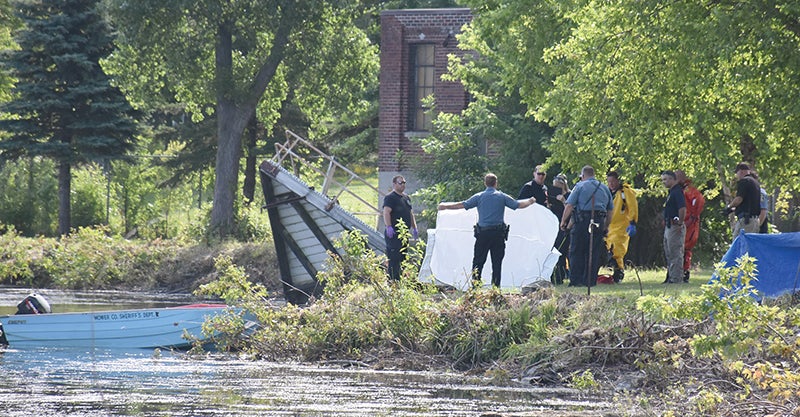Riege: Fishing for winter perch
Published 5:32 pm Wednesday, January 26, 2011
BY BOB AND GINNY RIEGE
When it comes to hard water angling, panfish top the list. If you were to take a survey on the ice, you would find as many as 80 percent of the fishermen are in pursuit of panfish. Don’t get me wrong, some attention is given to walleye and pike, but they seem to be secondary on many fishermen’s agendas. Unlike pike or walleye, which can turn off for days, panfish are predictable. The average fisherman is out to have fun, many times making it a family affair.
The problem with ice fishing, in many cases, is that people let themselves get bored, or cold, or discouraged. That doesn’t have to be the case. It’s a matter of being willing to change and try something new.
If I haven’t had any action in 15 minutes, I move! Drill a few more holes. It’ll keep you warm. If you can’t handle the labor, bring a young kid with you. They love to fish and they have unlimited energy as long as they’re enthusiastic about the trip. Remember kids have short attention spans (so do most adults) and if the fish aren’t hitting or the weather is too cold or windy it’s no fun at all being on the ice. Keep it short and sweet and your youngster will be much more likely to get excited about the next trip.
Perhaps the hardest thing about perch fishing through the ice is finding them. Narrow the scope of the search by stopping at bait shops to ask for the latest information on where perch are biting. If they mention a particular lake, you’re ahead.
Once you arrive, watch for other anglers. This can be a good indicator on where perch schools are roaming on any given day. Stay on the outside of any pack and be advised; Perch move a lot, they will eat everything in sight and move on. You might catch a bunch in one area one day and go back the next and not catch a one.
A two-step approach helps to target perch. First area is to concentrates on shallow perch working the remaining green weeds. The second centers on deep water, usually mud flats and holes. In weeds, perch may be there eating small leeches and insect larvae. In deep water, they are probably focusing on microscopic zooplankton or mayfly larvae known as “wigglers.” If fish aren’t in one of those places, they will probably be in the other.
Start by checking for shallow fish. Check weed patches on the edges of bars or dropoffs on the edges of flats. Perch will migrate along the sides or over the tops of the weed patches.
Drill lots of holes and fish each one. It’s often impossible to see these fish on the flasher because they can stay so tight to the bottom or in the vegetation. You can’t tell if fish are there unless you drop your bait down to see. An underwater camera like an Vexilar Fish Scout can do the trick, too.
If no fish are biting after a few minutes, head for deeper water. Depending on the lake, deeper water can mean 20, 40 and 60 feet. Fish go deeper and water temperature drops until they start to move shallower again in late February while preparing to spawn on sandy bottoms. Perch are the first species to reproduce each year.
Look for deep mud flats off the tips of points. I like to use Vexilar FL-20 with the zoom feature. I can concentrate on the area closest to the bottom where the fish are.
In low-light conditions at sunrise, a band of zooplankton often clutters the view of the bottom as they emerge from the mud. That’s a good sign. Perch won’t be far away.
Try the new Neon Super-Glo colors, especially in times of low-light.
Try adding a split shot a few inches above the jig in order to get the bait down quickly to avoid wasted time. Add three of four “spikes,” wigglers or two waxies for action, smell and taste of natural bait. When fishing for perch, it is critical that the bait is alive.
For finesse fishing, try a shorter Power Stick or True Blue ice rod of 16 or 24 inches still-fished in a second hole. With a crappie-sized minnow, use a split shot, hook or ice jig. Hook the minnow near the tail. This increases the action and perch like to take the minnows head-first. If the minnow tires, simply pick up the rod and jiggle it; that often wakes the minnow up and provokes a quick strike. Don’t be surprised if you take a bonus walleye or two.





